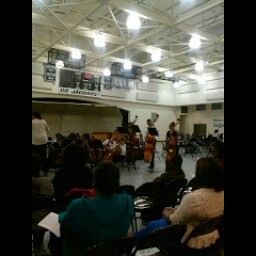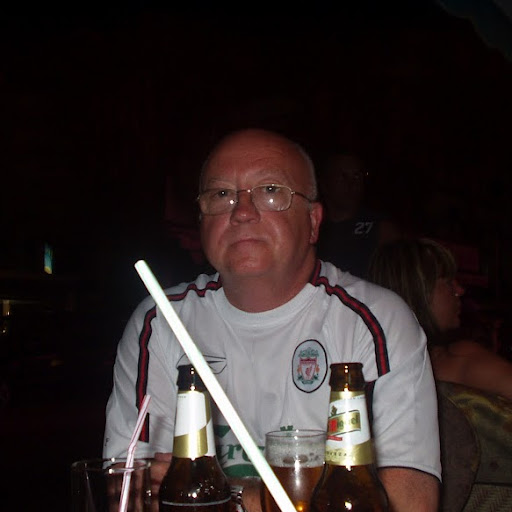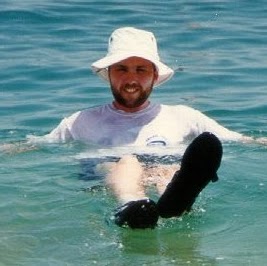David G Grier
age ~62
from Philadelphia, PA
- Also known as:
-
- David A Grier
- David G Locke
- David Griel
David Grier Phones & Addresses
- Philadelphia, PA
- Brooklyn, NY
- Ridgewood, NY
- Bronx, NY
- New York, NY
- Mc Fall, MO
Work
-
Company:Cleveland FSBO Homes
-
Address:Po Box 181565
-
Phones:4405213726
Specialities
Purchase Loan • Refinancing • FSBO Lending
Real Estate Brokers

David Grier, Cleveland Hts Oh 44118 OH
view sourceSpecialties:
Purchase Loan
Refinancing
FSBO Lending
Refinancing
FSBO Lending
Work:
Cleveland FSBO Homes
Po Box 181565
4405213726 (Office)
Po Box 181565
4405213726 (Office)
Links:
Site
Name / Title
Company / Classification
Phones & Addresses
COALITION FOR JUDICIAL AND LEGISLATIVE REFORM, INC
Principal
Allied Investigations LLC
Detective/Armored Car Services
Detective/Armored Car Services
707 Market St, Camden, NJ 08102
Resumes

David Grier
view source
David Grier
view source
David Grier
view source
Support Magistrate At Suffolk County Family Court
view sourceLocation:
Greater New York City Area
Industry:
Judiciary

David Grier
view sourceWork:
Self-employed
Sep 2012 to 2000
Plumber John Bain & Son Plumbing Contractors
Sep 2010 to Sep 2010
Plumber Advanced Construction
Jan 2010 to Jun 2010
Plumber/Labourer Sunlife Ltd
Burlington, CA
Jun 2009 to Jun 2009
Plumber Greystone Plumbing
Jun 2008 to Jun 2008
Sub contracted freelance Plumber/Gas Fitter CK Heating
Hillington
Oct 2005 to Oct 2005
Plumber/Gas Fitter James Frew Ltd
Aug 2001 to Aug 2001
Apprentice Plumber
Sep 2012 to 2000
Plumber John Bain & Son Plumbing Contractors
Sep 2010 to Sep 2010
Plumber Advanced Construction
Jan 2010 to Jun 2010
Plumber/Labourer Sunlife Ltd
Burlington, CA
Jun 2009 to Jun 2009
Plumber Greystone Plumbing
Jun 2008 to Jun 2008
Sub contracted freelance Plumber/Gas Fitter CK Heating
Hillington
Oct 2005 to Oct 2005
Plumber/Gas Fitter James Frew Ltd
Aug 2001 to Aug 2001
Apprentice Plumber
Education:
Ayr College
UK
Jun 2000
plumbing and heating
UK
Jun 2000
plumbing and heating

David Grier Port Jefferson, NY
view sourceWork:
SUFFOLK COUNTY FAMILY COURT
Dec 2005 to 2000
Support Magistrate SUFFOLK COUNTY FAMILY COURT
Aug 2004 to Nov 2005
Acting Support Magistrate SUFFOLK COUNTY DEPARTMENT OF LAW
Oct 2002 to Jan 2004
Deputy Bureau Chief SUFFOLK COUNTY DEPARTMENT OF LAW
Jan 2001 to Oct 2002
Principal Assistant County Attorney SUFFOLK COUNTY DEPARTMENT OF LAW
Hauppauge, NY
Feb 1999 to Jan 2000
OFFICE OF COUNTY EXECUTIVE SUFFOLK COUNTY DEPARTMENT OF LAW
Oct 1994 to Feb 1999
Assistant County Attorney
Dec 2005 to 2000
Support Magistrate SUFFOLK COUNTY FAMILY COURT
Aug 2004 to Nov 2005
Acting Support Magistrate SUFFOLK COUNTY DEPARTMENT OF LAW
Oct 2002 to Jan 2004
Deputy Bureau Chief SUFFOLK COUNTY DEPARTMENT OF LAW
Jan 2001 to Oct 2002
Principal Assistant County Attorney SUFFOLK COUNTY DEPARTMENT OF LAW
Hauppauge, NY
Feb 1999 to Jan 2000
OFFICE OF COUNTY EXECUTIVE SUFFOLK COUNTY DEPARTMENT OF LAW
Oct 1994 to Feb 1999
Assistant County Attorney
Education:
ST. JOHN'S UNIVERSITY
Jamaica, NY
Jun 1994
Juris Doctor in Dean's List STATE UNIVERSITY OF NEW YORK AT STONY BROOK
Stony Brook, NY
1990
Bachelor of Arts in Economics
Jamaica, NY
Jun 1994
Juris Doctor in Dean's List STATE UNIVERSITY OF NEW YORK AT STONY BROOK
Stony Brook, NY
1990
Bachelor of Arts in Economics
Skills:
Legal Research, contract negotiation and drafting, public speaking
Isbn (Books And Publications)


License Records
David P. Grier
License #:
16737 - Active
Issued Date:
May 29, 1996
Renew Date:
Dec 1, 2015
Expiration Date:
Nov 30, 2017
Type:
Certified Public Accountant
Medicine Doctors

David D. Grier
view sourceSpecialties:
Anatomic Pathology & Clinical Pathology
Work:
Wake Forest Baptist School Of Medicine Pathology
1 Medical Ctr Blvd, Winston Salem, NC 27157
3367164311 (phone)
1 Medical Ctr Blvd, Winston Salem, NC 27157
3367164311 (phone)
Education:
Medical School
Medical University of South Carolina College of Medicine
Graduated: 2001
Medical University of South Carolina College of Medicine
Graduated: 2001
Languages:
English
Spanish
Spanish
Description:
Dr. Grier graduated from the Medical University of South Carolina College of Medicine in 2001. He works in Winston-Salem, NC and specializes in Anatomic Pathology & Clinical Pathology. Dr. Grier is affiliated with Wake Forest Baptist Medical Center.
Wikipedia References

David G . Grier
Work:
Area of science:
Physicist
Position:Physicist
Education:
Area of science:
Nanotechnology • Leadership
Academic degree:Professor
Skills & Activities:
Award:
High honors

David Grier

David Alan Grier

David Alan Grier (Writer)

David G. Grier
Us Patents
-
Use Of Multiple Optical Vortices For Pumping, Mixing And Sorting
view source -
US Patent:6858833, Feb 22, 2005
-
Filed:May 17, 2004
-
Appl. No.:10/847042
-
Inventors:Jennifer E. Curtis - Chicago IL, US
Brian A. Koss - Chicago IL, US
David G. Grier - New York City NY, US -
Assignee:University of Chicago - Chicago IL
-
International Classification:H01J040/14
-
US Classification:250221, 250216
-
Abstract:A method for creating large numbers of high-quality optical traps in arbitrary three-dimensional configurations and dynamically reconfiguring the traps under computer control. The method uses computer-generated diffractive optical elements to convert one or more optical tweezers into one or more optical vortices. The method involves combining the optical vortex technique with the holographic optical tweezer technique to create multiple optical vortices in arbitrary configurations. The method also involves employing the rotation induced in trapped particles by optical vortices to assemble clusters of particles into functional micromachines, to drive previously assembled micromachines, to pump fluids through microfluidics channels, to control flows of fluids through microfluidics channels, to mix fluids within microfluidics channels, to transport particles, to sort particles and to perform other related manipulations and transformations on matter over length scales.
-
Apparatus For Using Optical Tweezers To Manipulate Materials
view source -
US Patent:7104659, Sep 12, 2006
-
Filed:Dec 10, 2004
-
Appl. No.:11/010004
-
Inventors:David G. Grier - New York NY, US
Eric R. Dufresne - Arlington VA, US
Jennifer E. Curtis - Chicago IL, US
Brian A. Koss - Chicago IL, US -
Assignee:University of Chicago - Chicago IL
-
International Classification:G02B 26/00
H01S 3/00 -
US Classification:359614, 359615, 359613, 359350, 359361, 359368
-
Abstract:A method and apparatus for control of optical trap arrays and formation of particle arrays using light that is in the visible portion of the spectrum. The method and apparatus provides a laser and a time variable diffractive optical element to allow dynamic control of optical trap arrays and consequent control of particle arrays and also the ability to manipulate singular objects using a plurality of optical traps. By avoiding wavelengths associated with strong absorption in the underlying material, creating optical traps with a continuous-wave laser, optimizing the efficiency of individual traps, and trapping extended samples at multiple points, the rate of deleterious nonlinear optical processes can be minimized.
-
Apparatus And Process For The Lateral Deflection And Separation Of Flowing Particles By A Static Array Of Optical Tweezers
view source -
US Patent:7137574, Nov 21, 2006
-
Filed:Jun 28, 2004
-
Appl. No.:10/878797
-
Inventors:David G. Grier - New York City NY, US
Pamela T. Korda - Los Angeles CA, US -
Assignee:University of Chicago - Chicago IL
-
International Classification:B05B 1/26
B05B 1/34
B05B 1/30 -
US Classification:239461, 239463, 239464, 239466, 239467, 239513
-
Abstract:A method and apparatus for laterally deflecting and/or separating a flow of particles using a static array of optical tweezers. In an array of optical tweezers with a lattice constant larger than the size of a particle of interest, particles driven past the array by an external force experience an additional interaction with the array of traps. By altering the angle of the array of traps relative to the external force, the particles' movement from trap to trap inside the array can be biased away from the direction of the external force, thereby enabling selective deflection and/or separation of particles.
-
Use Of Multiple Optical Vortices For Pumping, Mixing And Sorting
view source -
US Patent:7176445, Feb 13, 2007
-
Filed:Nov 4, 2005
-
Appl. No.:11/266989
-
Inventors:Jennifer E. Curtis - Manheim, DE
Brian A. Koss - Alexandria VA, US
David G. Grier - New York NY, US -
Assignee:University of Chicago - Chicago IL
-
International Classification:H01J 40/14
-
US Classification:250221, 250573
-
Abstract:A method for creating large numbers of high-quality optical traps in arbitrary three-dimensional configurations and dynamically reconfiguring the traps under computer control. The method uses computer-generated diffractive optical elements to convert one or more optical tweezers into one or more optical vortices. The method involves combining the optical vortex technique with the holographic optical tweezer technique to create multiple optical vortices in arbitrary configurations. The method also involves employing the rotation induced in trapped particles by optical vortices to assemble clusters of particles into functional micromachines, to drive previously assembled micromachines, to pump fluids through microfluidics channels, to control flows of fluids through microfluidics channels, to mix fluids within microfluidics channels, to transport particles, to sort particles and to perform other related manipulations and transformations on matter over length scales.
-
Optical Fractionation Methods And Apparatus
view source -
US Patent:7233423, Jun 19, 2007
-
Filed:May 14, 2004
-
Appl. No.:10/845758
-
Inventors:David G. Grier - New York NY, US
-
Assignee:University of Chicago - Chicago IL
-
International Classification:G02B 5/32
G02B 1/00
G02B 5/18
G02B 27/44 -
US Classification:359 15, 359566, 359900
-
Abstract:Static arrays of optical traps can be used to sort microscopic objects with exponential sensitivity to size. Such optical fractionation relies on competition between an externally applied force and the moving objects' differing affinities for optical gradient traps. In a reverse fractionation method, objects that are more strongly influenced by the traps tend to become kinetically locked in to the array and are systematically deflected back into an input flow. In a thermal ratcheting method, patterns are spaced to allow particle diffusion, thus providing the opportunity for forward or reverse movement through the patterns. Unlike other sorting techniques, optical fractionation can operate continuously and can be continuously optimized. The exponential sensitivity arises quite generally from the particle size dependence of the potential wells' apparent widths.
-
Manipulation Of Objects In Potential Energy Landscapes
view source -
US Patent:7473890, Jan 6, 2009
-
Filed:Nov 22, 2005
-
Appl. No.:11/285224
-
Inventors:David G. Grier - New York NY, US
Marco Polin - New York NY, US
Sang-Hyuk Lee - Rego Park NY, US
Yael Roichman - New York NY, US
Kosta Ladavac - Ridgefield CT, US -
Assignee:New York University - New York NY
-
International Classification:H01H 3/02
-
US Classification:250251, 204299 R, 310363
-
Abstract:Holographic optical traps using the forces exerted by computer-generated holograms to trap, move and otherwise transform mesoscopically textured materials. The efficacy of the present invention is based upon the quality and nature of the diffractive optical element used to create the traps and dynamically use them. Further a landscape of potential energy sites can be created and used to manipulate, sort and process objects.
-
Extended Optical Traps By Shape-Phase Holography
view source -
US Patent:7491928, Feb 17, 2009
-
Filed:Dec 4, 2006
-
Appl. No.:11/633178
-
Inventors:Yohai Roichman - New York NY, US
David G. Grier - New York NY, US
Ilias Cholis - New York NY, US -
Assignee:New York University - New York NY
-
International Classification:H01S 1/00
G02B 27/00 -
US Classification:250251, 250216, 250574, 359641, 359558
-
Abstract:A method and system for establishing extended optical traps for commercial use. The method and system employs a diffractive optical element (DOE) to process a light beam wherein the DOE includes phase information and amplitude information to create the extended optical trap. Such extended traps can be line traps and can be further expanded to two and three dimensional configurations.
-
Topologically Multiplexed Optical Data Communication
view source -
US Patent:7546037, Jun 9, 2009
-
Filed:Sep 8, 2005
-
Appl. No.:11/222469
-
Inventors:David G. Grier - New York NY, US
-
Assignee:New York University - New York NY
-
International Classification:H04J 14/02
H04B 10/00
H04B 10/04
H04B 10/06 -
US Classification:398 82, 398169, 398170, 398201, 398212
-
Abstract:Systems and methods for encoding information in the topology of superpositions of helical modes of light, and retrieving information from each of the superposed modes individually or in parallel. These methods can be applied to beams of light that already carry information through other channels, such as amplitude modulation or wavelength dispersive multiplexing, enabling such beams to be multiplexed and subsequently demultiplexed. The systems and methods of the present invention increase the number of data channels carried by a factor of the number of superposed helical modes.

David Grier
view source
David Grier
view source
David Grier
view source
David Grier
view source
David Alan Grier
view source
David Grier
view source
David Grier
view source
Grier David
view sourceGoogleplus

David Grier
Work:
Grier Productions, Inc. - President (2000)
National Cybercast - Producer (1999-2001)
National Cybercast - Producer (1999-2001)
About:
I have been shooting and editing film since 1973 when I was 14 years old. I took a little detour to do stand up comedy and play bass in a blues band. After doing a cooking show with my comedy partner ...

David Grier

David Grier

David Grier

David Grier

David Grier

David Grier

David Grier
Flickr
Plaxo

David Grier
view sourceBuffalo, NYRelease Engineer at Synacor

David Grier
view sourceCharlton MAPast: VP at Caledonian Alloys
Myspace
Classmates

David Grier
view sourceSchools:
Central High School Jackson MS 1971-1975
Community:
Gene Norton, Beverly Maddox, Rod Windham, Reba Phillips, Randall Goldman

David Grier
view sourceSchools:
Saint John the Evangelist School Hydes MD 1984-1992, Calvert Hall College High School Towson MD 1991-1995
Community:
Neil Dickerson, Pasquale Pat, Bill Mcgraw

David Grier
view sourceSchools:
Catawba High School Rock Hill SC 1985-1989
Community:
Rodney Dyer, Reece Johnson

David Grier
view sourceSchools:
Tri County High School Buena Vista GA 1983-1987
Community:
Earnestine Williams

David Grier
view sourceSchools:
Early County High School Blakely GA 1996-2000
Community:
Kelita Wright

David Grier
view sourceSchools:
Charles H. Boehm Middle School Yardley PA 1967-1969
Community:
Andrei Freeman, Tina Morewood, Jim Tams

David Grier
view sourceSchools:
Meadowlark Elementary School Edmonton Azores 1995-1999
Community:
Patrick Mccready, Kelly Ward, Peter Lake, Michael Nelson, Eric Parker

David Grier
view sourceSchools:
Price High School Atlanta GA 1967-1971
Community:
Cresie Gibbons, Gwendolyn Williams, George Rhone, Eddie Anderson
News

'Star Trek' has lived long and prospered
view source- David Grier, professor of physics and director of the Center for Soft Matter Research at New York University, has been a Star Trek fan since seeing the original series. Hes also featured in the Smithsonian Channel special Building Star Trek.
- Date: Sep 10, 2016
- Category: Entertainment
- Source: Google

Star Trek 50th Anniversary Comic-Con Plans Revealed
view source- Air and Space Museum, moderates a discussion with Dr. Sonny Kohli, Team Leader of Cloud DX, a finalist for the Qualcomm Tricorder XPRIZE; David Grier, Professor of Physics and Director of the Center for Soft Matter Research at New York University, who is developing a real-life Tractor Beam; Dr. Rob Afza
- Date: Jul 05, 2016
- Category: Entertainment
- Source: Google

ELEC-TRICK! Lightning-rod magician David Blaine to play with 1 million volts ...
view source- As long as his suit functions as planned, I dont see anything that can go wrong, said David Grier, a professor of physics at New York University. Its like driving in a car during a thunderstorm.
- Date: Oct 02, 2012
- Category: Entertainment
- Source: Google
Youtube
Get Report for David G Grier from Philadelphia, PA, age ~62


















